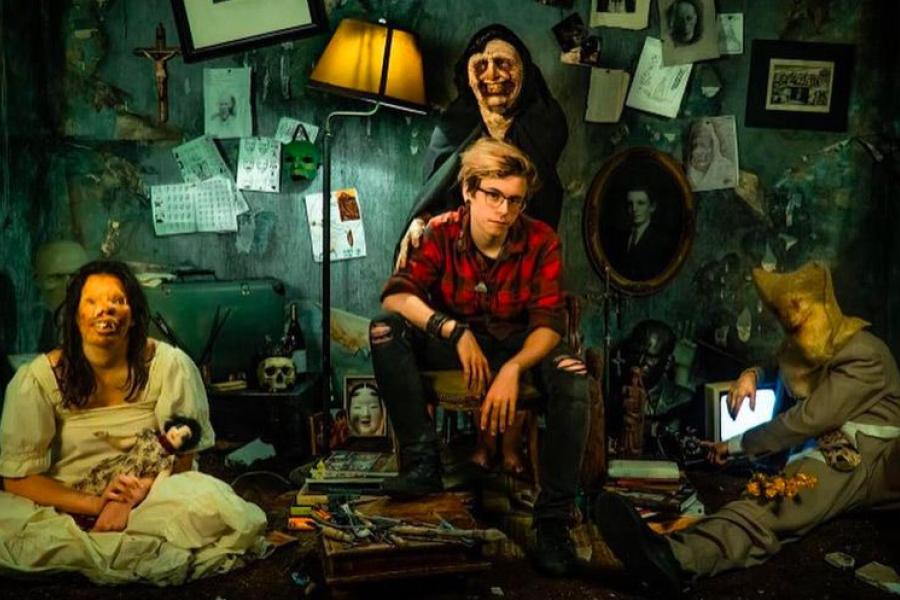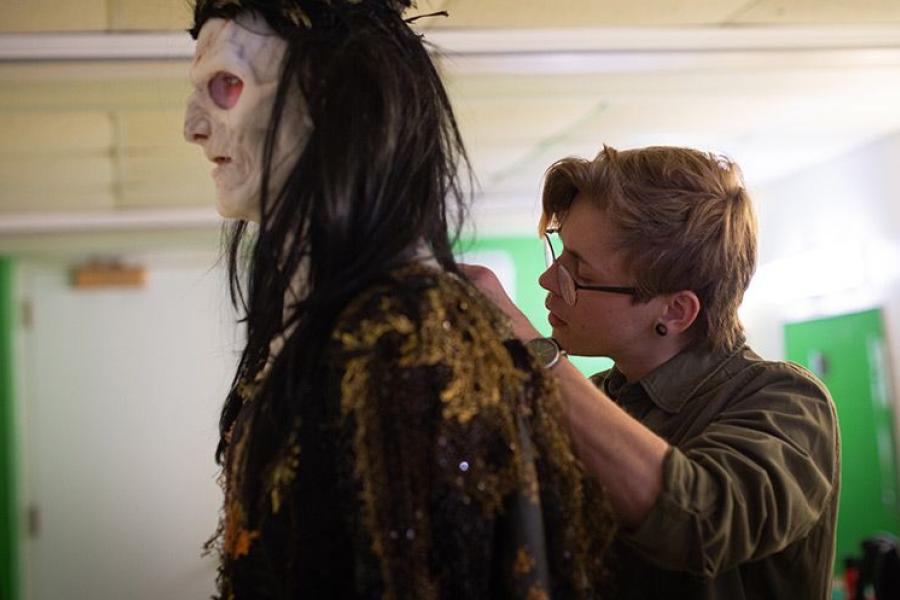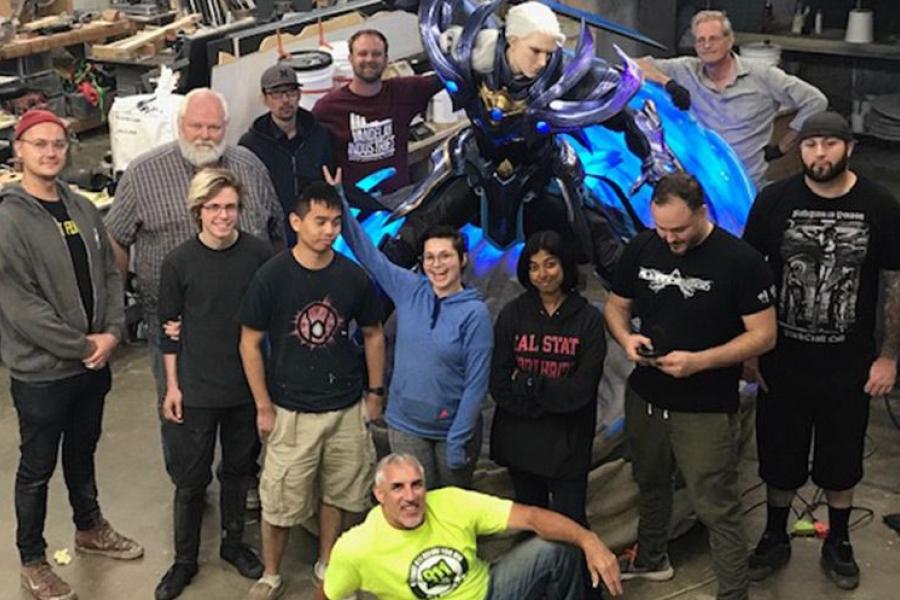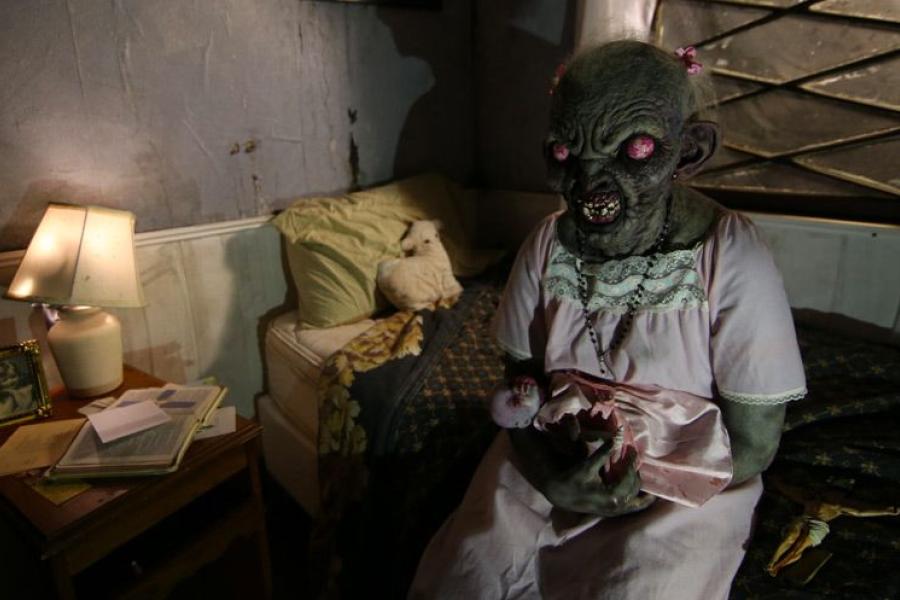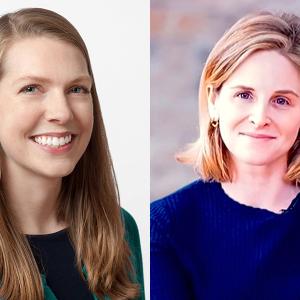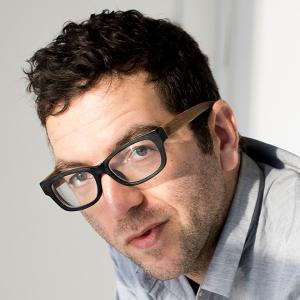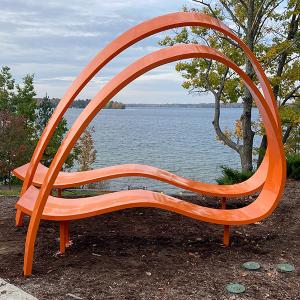Applications are still open for Arts Camp and Arts Academy. Programs fill quickly—submit your app today!
Nicholas Winstead: Finding humanity through monsters
A conversation with Interlochen alumnus and professional SFX visual artist Nicholas Winstead.
From Japanese Noh to the Greek plays of antiquity, masks have been used over the millenia to transform performers. Whether these masks represent a deity, a beast, a concept, or something else entirely, their often-otherworldly visages are a reflection into the human condition. For both the actor and the audience, these masks allow us to explore aspects of humanity that may otherwise be too difficult or abstract to express outright.
For monster-maker and special effects visual artist Nicholas Winstead (IAA 15-17), the craft of making a mask isn’t just about breathing life into a character or persona; it’s an opportunity for introspection as he uses the process to explore his own beliefs, fears, and feelings.
“You can learn about being human through monsters,” said Winstead during a recent visit to Interlochen Center for the Arts. “You can say a lot of genuine and candid things through them.”
Winstead’s love for monsters began at an early age while growing up in Mississippi. Watching horror films, he found himself interested not only in the craft of the monster make-ups, but the thematic questions and feelings they conveyed. Albeit frightened, he was also intrigued. Things can be scary, but also entirely relatable.
It was at a young age that Winstead discovered that through drawing these monsters, he gained control over them and conversely, his own fears. Soon he grew tired of simply replicating what he saw on television, and began crafting creatures and masks of his own. Though neither was tertiary from the other, his interest in monsters and art continued to develop on parallel tracks throughout his adolescent and teen years.
“When I applied to Interlochen, I had two portfolios: a 2D and sculpture portfolio, and a second one with monsters and creatures,” recalled Winstead. “I only submitted my fine art portfolio to the Arts Academy. At the time, I didn’t really see my monsters and effects work as respectable fine art, even though that’s what I really enjoyed doing.”
Nonetheless, Interlochen saw Winstead’s talents, and he was accepted into the Arts Academy. With support from his instructors, Winstead developed his understanding of fine art and used his time to teach himself the craft of visual effects make-up, including how to make molds, cast latex and silicone masks, and how to best paint these appliances.
“Going to Interlochen taught me that the two things shouldn’t be thought of so differently,” Winstead said. “Craft is craft. I was given the opportunity to ask what meant the most to me, and that was monsters. Having that framework taught me how to integrate my love of monsters into a fine art sensibility, which gave me the chance to give monsters respect that they deserved.”
The time that Winstead spent making masks in the Herbert H. and Barbara C. Dow Center for Visual Arts wasn’t just an artistic expression; it was also a therapeutic act. Winstead was no longer just controlling his fears, but using his art to cleanse himself of toxic thoughts and feelings. Understanding the complexities of his own emotions, Winstead gave his creatures depth, and by doing so, made them more human. Monsters can be good, beauty can mask evil, and through this cathartic act, Winstead found a way to navigate the world around him.
Winstead’s talents did not go unnoticed. Shortly before the start of his senior year as he spent his summer vacation away from Interlochen working in a special effects shop helping fabricate makeups for American Horror Story: Roanoke. Later that year, Winstead received national recognition when he was awarded a 2017 American Voices and Visions award through the Scholastic Art and Writing Awards.
After graduating from Interlochen, Winstead moved to Los Angeles and began working in the film/television industry. Over the past year, he has had the opportunity to work with various effects studios on a number of projects. Earlier this year he worked under the Oscar-nominated special effects artist Arjen Tuiten doing shop work for Disney’s upcoming, feature-length film Maleficent II.
“Working with such talented people in the professional setting is definitely a trial by fire,” Winstead said. “Being in LA has taught me so much about the importance of communication. It’s not just about being a good artist, but a good person.”
Though the release of Maleficent II is still several years away, those that were able to attend or watch the webcast of Interlochen’s recent production of Pyotr Ilyich Tchaikovsky's Swan Lake were fortunate enough to get a glimpse of Winstead’s work. When pre-production began on the ballet, Director of Dance Joseph Morrissey remembered Winstead’s work and hired him to design a mask for the villainous Rothbart.
It was in Morrissey that Winstead found a kindred spirit. “[Morrissey] wanted something scary, but not repulsive,” said Winstead. Because as it is in real life often the scariest things aren’t what’s on the outside, but what lurks just below the surface.
You can follow Nicholas Winstead on Instagram at @nicholaswinstead.
